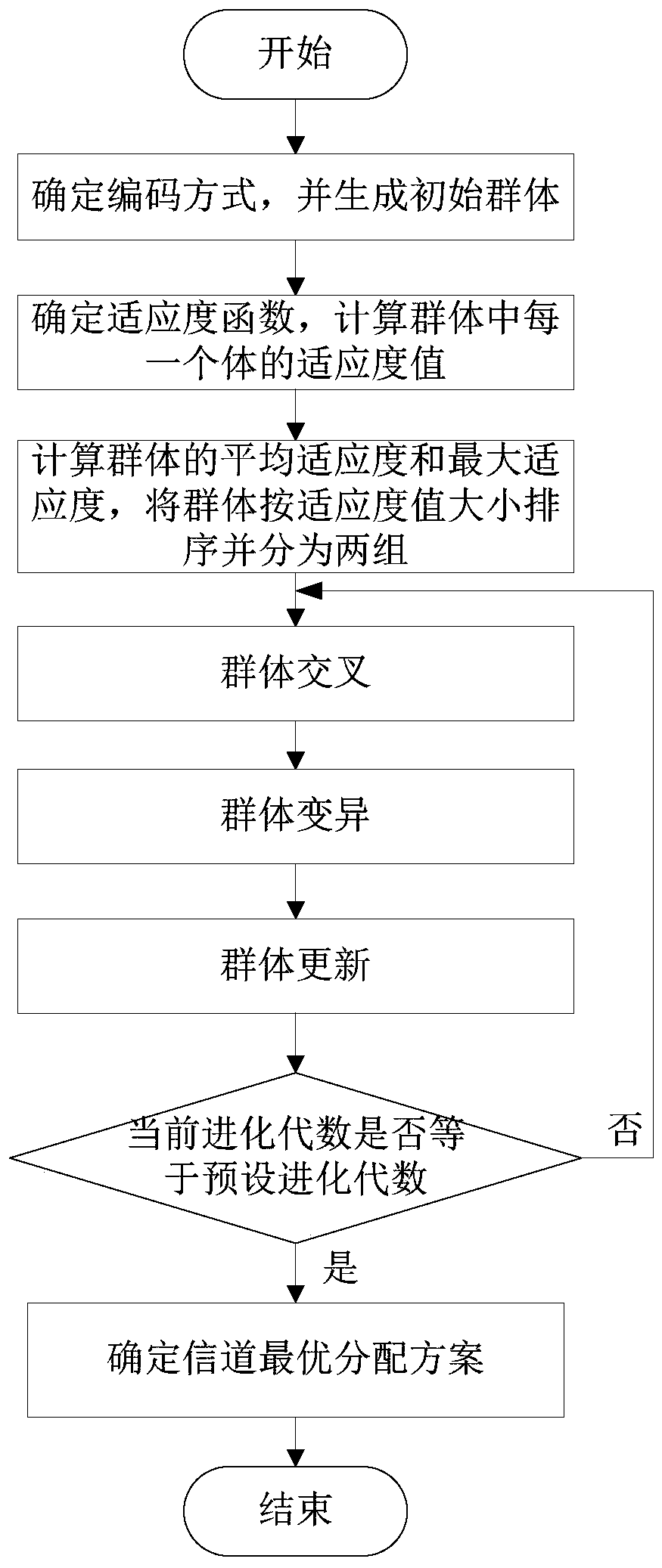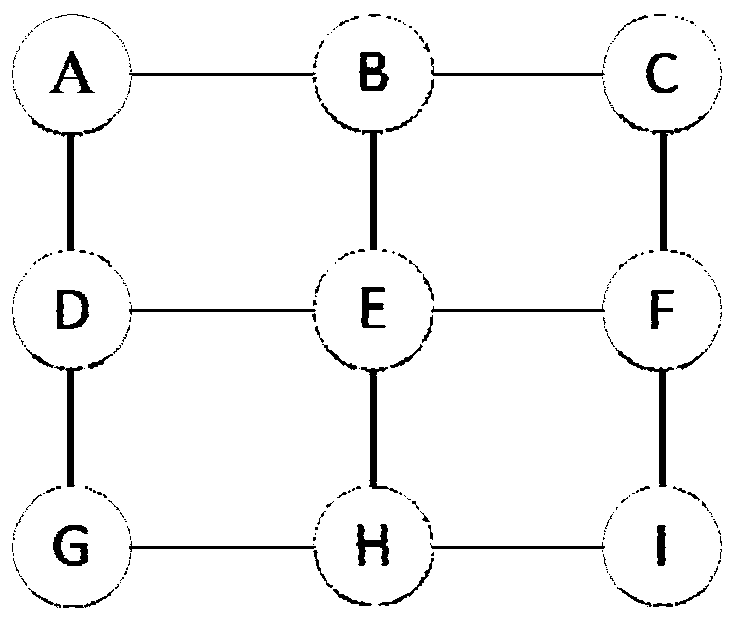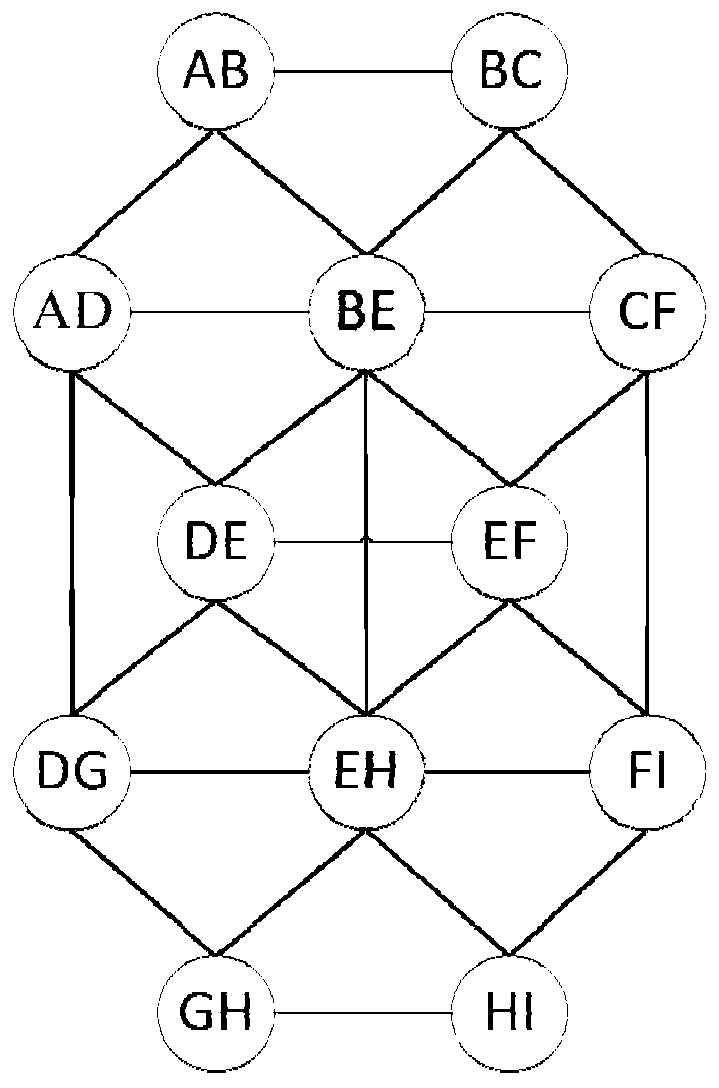Channel allocation method, device and storage medium based on cognitive wireless network
A cognitive wireless network and channel allocation technology, applied to equipment and storage media, in the field of channel allocation methods based on cognitive wireless networks, can solve problems such as wasting communication resources, achieve a single solution, improve network throughput and channel utilization rate effect
- Summary
- Abstract
- Description
- Claims
- Application Information
AI Technical Summary
Problems solved by technology
Method used
Image
Examples
Embodiment 1
[0071] This embodiment takes the flow of the adaptive genetic algorithm as the basic framework. Due to the limitations of the existing genetic algorithm itself, the optimization process is prone to premature and local convergence problems. In order to solve the existing genetic algorithm channel allocation in ocean fishing boats, Improve the genetic algorithm to realize variable parameters, so that the crossover rate and mutation rate can be adaptively changed with the fitness of the group, thereby providing the best crossover rate and mutation rate relative to a certain solution, enhancing the global search ability of the algorithm, and avoiding the algorithm from falling into local Optimum, improve search efficiency. The specific steps of the channel allocation method based on the cognitive wireless network described in this embodiment include:
[0072] 1) Determine the coding method and generate the initial group
[0073] Establish user connection graph based on graph theo...
Embodiment 2
[0104]The effects of the present application will be further described below in combination with simulation experiments.
[0105] In order to verify the effect and function of the adaptive genetic algorithm in channel allocation of marine fishing boats, this application designs a simulation experiment to explore the performance improvement of the improved algorithm in channel allocation such as throughput and channel conflict. Assume that all users at sea are randomly distributed in an area of 1000m*1000m in the form of a distributed network, assuming that 40 users are randomly generated in the area, including 2 authorized users and 38 cognitive users, such as Figure 4 As shown, the authorized user's coverage is r PU =400m, the communication distance of cognitive users is r com = 250m, the interference range of cognitive users is r inter =2.2×r com .
[0106] Based on the settings of the above simulation environment, the average value of the experimental results repeate...
Embodiment 3
[0113] Figure 8 A schematic structural diagram of the electronic device provided in Embodiment 3 of the present application, such as Figure 8 As shown, the device includes: a memory 801 and a processor 802;
[0114] Memory 801, for storing computer programs;
[0115] Wherein, the processor 802 executes the computer program in the memory 801, so as to implement the methods provided by the above method embodiments.
[0116] In this embodiment, the processor may be a central processing unit (CPU) or other forms of processing units with data processing capabilities and / or instruction execution capabilities, and may control other components in the electronic device to perform desired functions.
[0117] The memory may include one or more computer program products, which may include various forms of computer-readable storage media, such as volatile memory and / or non-volatile memory. The volatile memory may include random access memory (RAM) and / or cache memory (cache), etc., fo...
PUM
 Login to View More
Login to View More Abstract
Description
Claims
Application Information
 Login to View More
Login to View More - R&D
- Intellectual Property
- Life Sciences
- Materials
- Tech Scout
- Unparalleled Data Quality
- Higher Quality Content
- 60% Fewer Hallucinations
Browse by: Latest US Patents, China's latest patents, Technical Efficacy Thesaurus, Application Domain, Technology Topic, Popular Technical Reports.
© 2025 PatSnap. All rights reserved.Legal|Privacy policy|Modern Slavery Act Transparency Statement|Sitemap|About US| Contact US: help@patsnap.com



